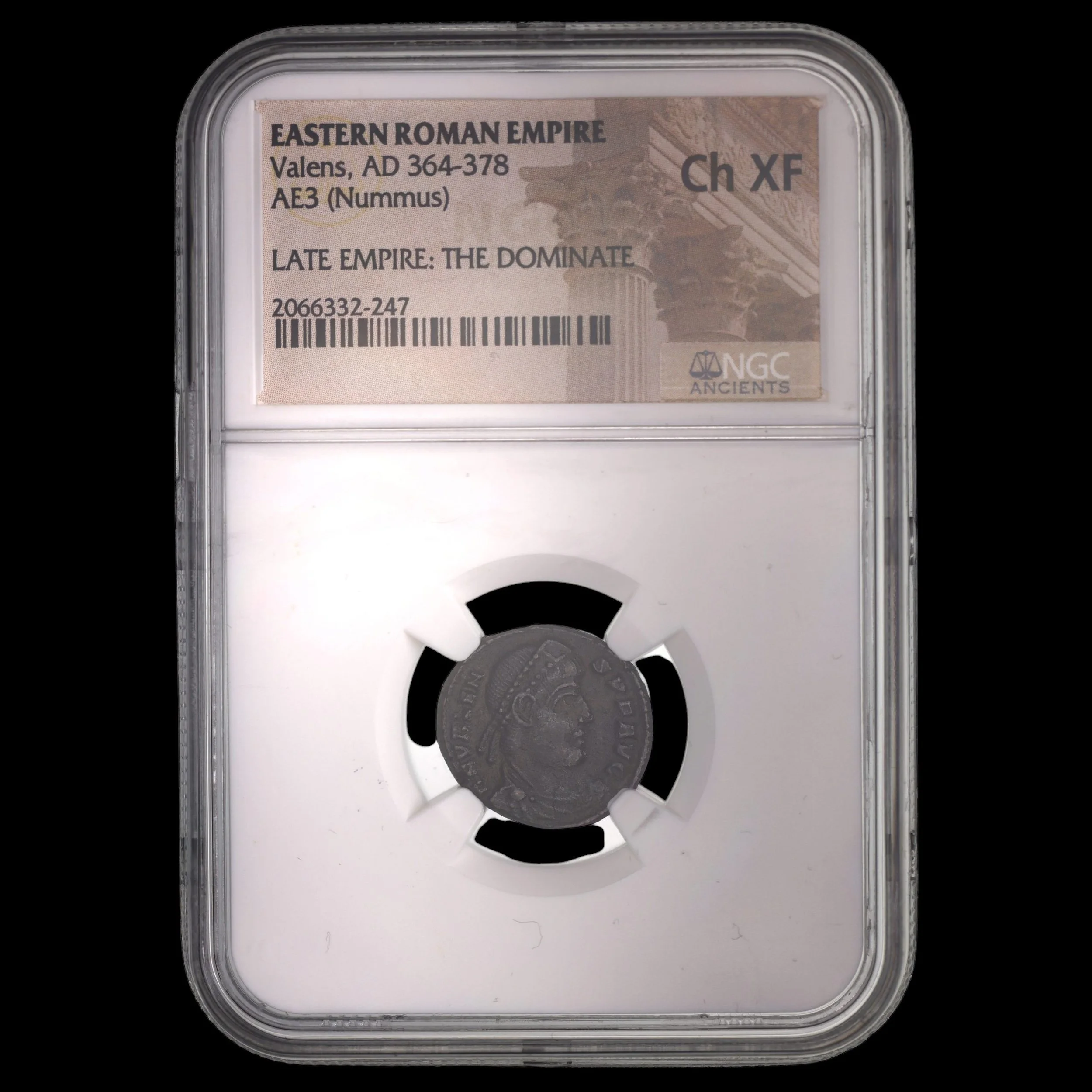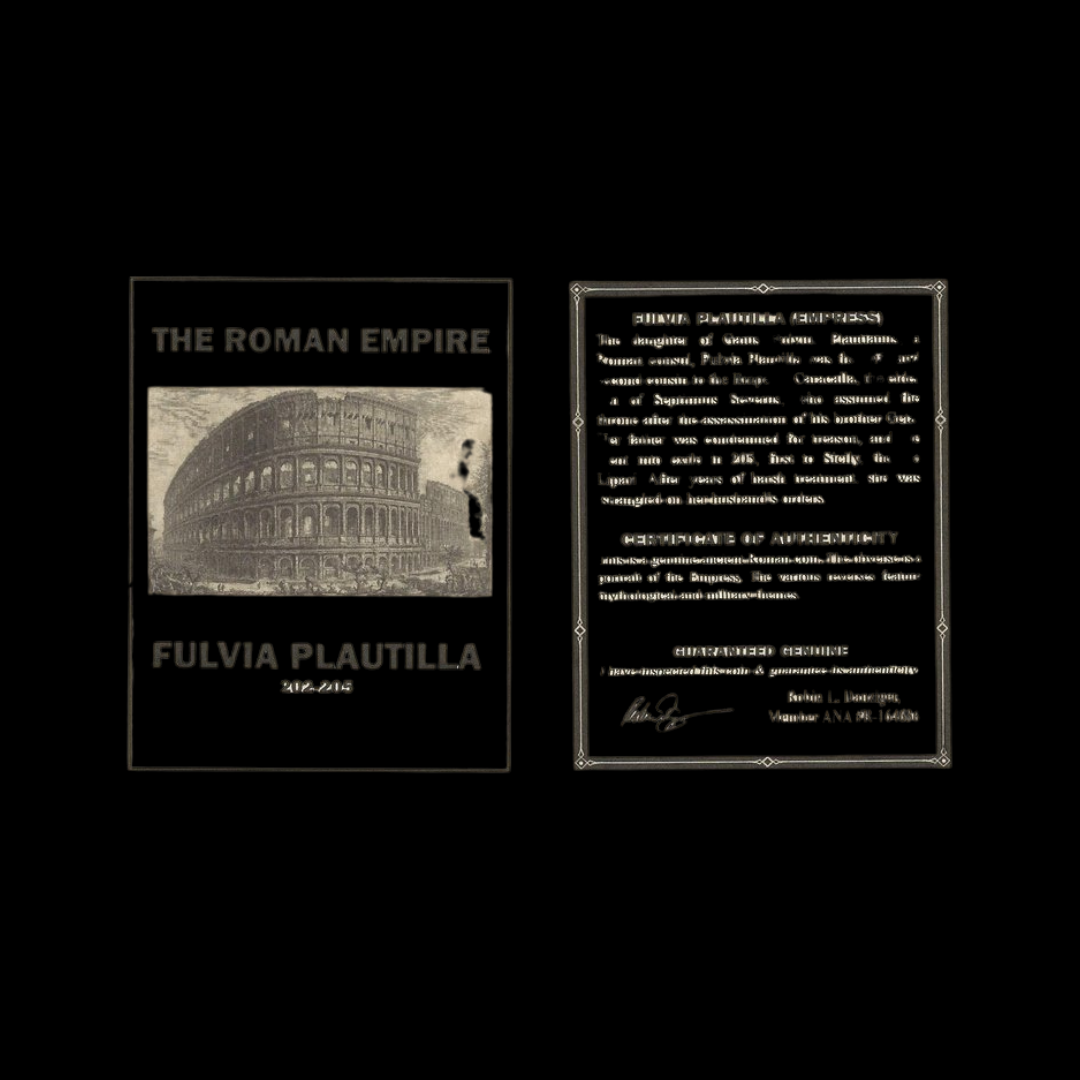 Image 1 of 5
Image 1 of 5

 Image 2 of 5
Image 2 of 5

 Image 3 of 5
Image 3 of 5

 Image 4 of 5
Image 4 of 5

 Image 5 of 5
Image 5 of 5






Roman Silver Coin of Emperor Maximinus Thrax (about 1,785-1,790 years ago)
The coins shown are representative examples of the grade and type, but not the actual specimens for sale. For details on NGC’s grading standards and definitions, please refer to our NGC Grading page.
This silver-washed antoninianus depicts Maximinus I, nicknamed "Thrax" (the Thracian), the first emperor to rise purely from the ranks of the common soldiery without any senatorial background. Known for his imposing physical size and military focus, Maximinus represented the growing influence of the army in imperial politics during the turbulent mid-third century, a trend that would accelerate during the subsequent Crisis of the Third Century.
Coin Description:
Front side: Portrait of Emperor Maximinus Thrax facing right, wearing a radiate crown, with distinctive strong facial features including prominent brow, nose, and jaw, accompanied by Latin inscription giving his name and titles
Back side: Likely depicts military themes, personifications like Providentia (Providence) or Salus (Health/Welfare), or deities like Mars (god of war), reflecting his military priorities
Technical Details:
Silver-washed bronze composition (antoniniani of this period contained decreasing amounts of actual silver)
Denomination: Antoninianus (valued at two denarii)
NGC certified in protective slab
Minted between 235-238 AD
Condition as certified by NGC
Historical Significance:
Maximinus Thrax marks a pivotal shift in Roman imperial history as the first "barracks emperor" who rose from common origins to the throne solely through military service. Born in Thrace (modern Bulgaria), legends described him as a giant of a man—reportedly over eight feet tall with a thumb so large he wore his wife's bracelet as a ring, though these claims were likely exaggerated. After assassinating the young Emperor Severus Alexander in 235 AD, Maximinus focused exclusively on military matters, doubling soldiers' pay while heavily taxing civilians to fund campaigns against Germanic tribes. His preferential treatment of the army at the expense of the nobility alienated the Senate, which declared him a public enemy in 238 AD. The resulting civil war ended with his assassination outside Aquileia (in modern Italy) by his own troops, beginning the "Year of Six Emperors" that plunged Rome into the Crisis of the Third Century.
The coins shown are representative examples of the grade and type, but not the actual specimens for sale. For details on NGC’s grading standards and definitions, please refer to our NGC Grading page.
This silver-washed antoninianus depicts Maximinus I, nicknamed "Thrax" (the Thracian), the first emperor to rise purely from the ranks of the common soldiery without any senatorial background. Known for his imposing physical size and military focus, Maximinus represented the growing influence of the army in imperial politics during the turbulent mid-third century, a trend that would accelerate during the subsequent Crisis of the Third Century.
Coin Description:
Front side: Portrait of Emperor Maximinus Thrax facing right, wearing a radiate crown, with distinctive strong facial features including prominent brow, nose, and jaw, accompanied by Latin inscription giving his name and titles
Back side: Likely depicts military themes, personifications like Providentia (Providence) or Salus (Health/Welfare), or deities like Mars (god of war), reflecting his military priorities
Technical Details:
Silver-washed bronze composition (antoniniani of this period contained decreasing amounts of actual silver)
Denomination: Antoninianus (valued at two denarii)
NGC certified in protective slab
Minted between 235-238 AD
Condition as certified by NGC
Historical Significance:
Maximinus Thrax marks a pivotal shift in Roman imperial history as the first "barracks emperor" who rose from common origins to the throne solely through military service. Born in Thrace (modern Bulgaria), legends described him as a giant of a man—reportedly over eight feet tall with a thumb so large he wore his wife's bracelet as a ring, though these claims were likely exaggerated. After assassinating the young Emperor Severus Alexander in 235 AD, Maximinus focused exclusively on military matters, doubling soldiers' pay while heavily taxing civilians to fund campaigns against Germanic tribes. His preferential treatment of the army at the expense of the nobility alienated the Senate, which declared him a public enemy in 238 AD. The resulting civil war ended with his assassination outside Aquileia (in modern Italy) by his own troops, beginning the "Year of Six Emperors" that plunged Rome into the Crisis of the Third Century.




























